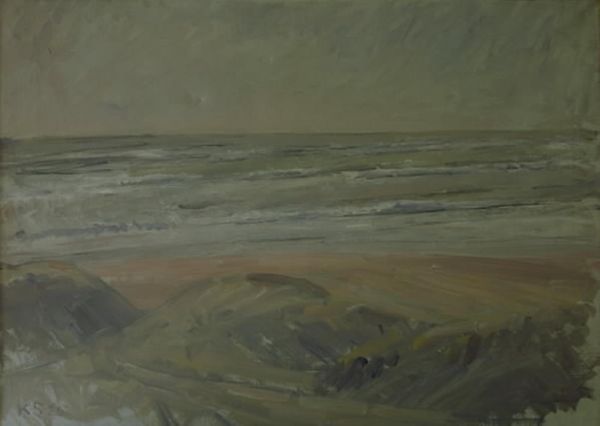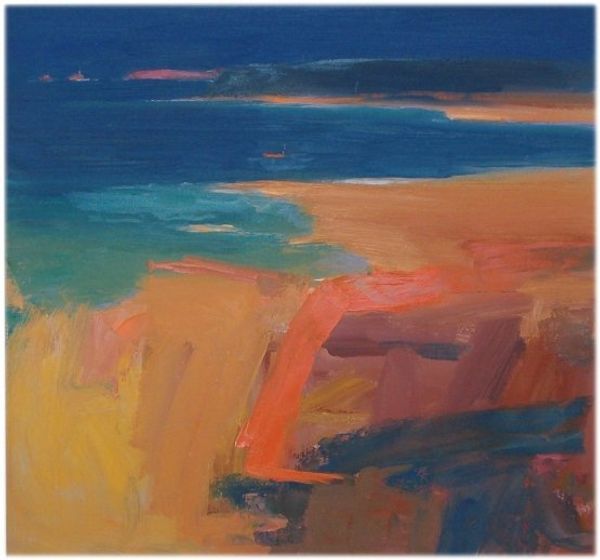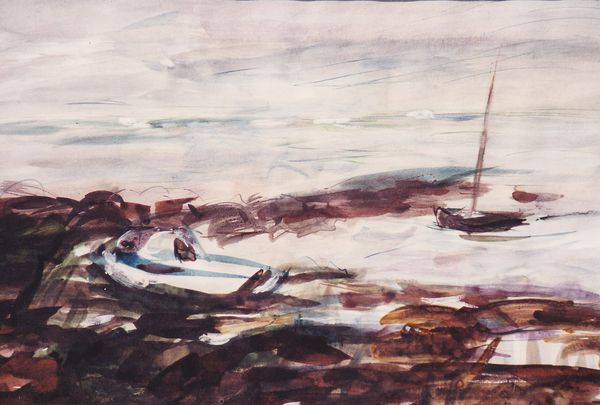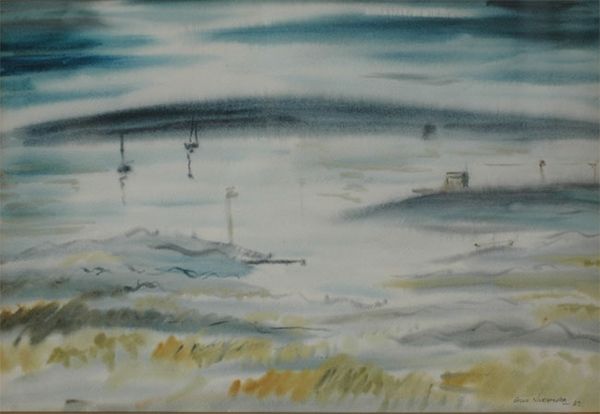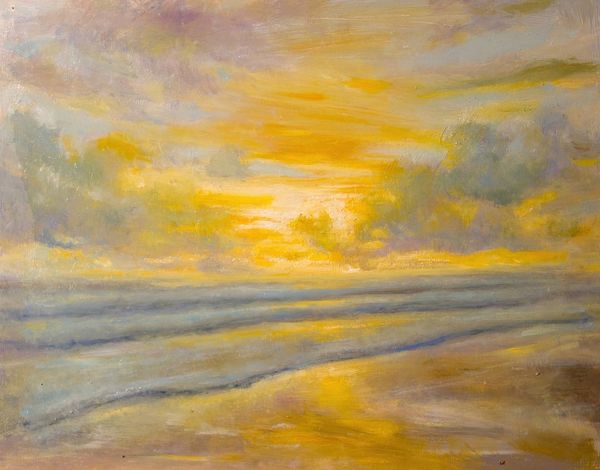
painting, plein-air, watercolor
#
contemporary
#
rough brush stroke
#
painting
#
plein-air
#
landscape
#
watercolor
#
watercolor
Copyright: Ivan Albright,Fair Use
Editor: We’re looking at "The Amazon River, Iquitos, Peru," a watercolor painting by Ivan Albright from 1971. It’s remarkable how Albright captures the vastness of the Amazon using what appear to be quite gestural, almost hurried brushstrokes. What is your take on this work? Curator: Notice how the composition adheres to a somewhat classical tripartite division: sky, horizon, water. Albright isn’t simply rendering a scene; rather, he is constructing an environment through the interplay of color and form. Consider the dominance of warm ochre tones, varied only by pale rose hints. The color choices aren’t just descriptive, they shape our perception. Editor: So you’re focusing on how the paint itself creates the mood? Curator: Precisely. Observe how the quick, almost choppy brushstrokes create texture, simulating the river's surface, and drawing attention to the flatness of the picture plane. This interplay between representation and abstraction is crucial. Does this approach resonate with you? Editor: It does. I hadn’t really thought about the abstract qualities of the brushstrokes themselves, I was so caught up in it being a landscape. The lack of strong color variations almost makes it seem to flatten the space. Curator: Indeed. The minimal use of high chroma suggests that Albright is not simply portraying a physical location. What is your interpretation of it? Editor: Thinking about the abstract quality helps. It’s less a specific place, and more a study of form and texture, evoked by the interplay of ochre and the brushstrokes. It’s a representation of something beyond pure observation. Curator: I concur. Paying close attention to Albright's artistic strategy expands how we understand this seemingly simple landscape painting.
Comments
No comments
Be the first to comment and join the conversation on the ultimate creative platform.
